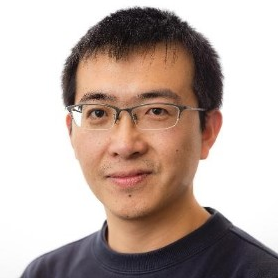Ocean Renewable Energy Systems (ORES); Wave–Structure Interaction Analysis and Design Methods
A special issue of Journal of Marine Science and Engineering (ISSN 2077-1312). This special issue belongs to the section "Ocean Engineering".
Deadline for manuscript submissions: closed (29 August 2020) | Viewed by 44570
Special Issue Editors
Interests: wave-structure interaction; offshore wind turbines; wave energy converters; marine civil engineering; offshore and coastal structures; hydrodynamics; marine hydraulics; monitoring technologies in marine engineering
Special Issues, Collections and Topics in MDPI journals
2. Research Institute, Dalian University of Technology in Shenzhen, Shenzhen 518057, China
Interests: offshore wind energy; drivetrain dynamics; wave energy; floating wind turbine; hydrodynamics
Special Issues, Collections and Topics in MDPI journals
Special Issue Information
Dear Colleagues,
Ocean Renewable Energy Systems (ORES) are at a critical crossroad; Offshore Wind Turbines (OWTs) have proven that may lead the energy outlook in years to come and Wave Energy Converters (WECs) are in the critical phase of their reconsideration and redesign. A large number of OWT farms are already in operation while WECs arrays are in the pre-commercial phase. At the same time possible combined ORES or co-located farms and arrays, combining the two technologies are being researched. Successful steps forward, towards safety, sustainability and resilience, are required from both technologies for different reasons but with the same target.
ORES are operating in a very challenging environment where dynamic excitation loads from different sources and with different characteristics need to be considered. The development of numerical analysis models and design methods of ORES as single systems or in OWTs farm and WECs array configurations is a very demanding task. New methods for addressing the wave–structure interaction effects are continuously being developed. Design methods covering the whole life-cycle range of ORES (conception, design, installation, operation, maintenance, dismantling) are continuously redeveloped and reassessed. Novel techniques (e.g. artificial intelligence and smart sensors) are being tested and integrated with various numerical models and design methods.
In this context, this Special Issue invites original scientific contributions on topics including, without being limited to:
Wave–structure interaction and numerical analysis of Ocean Renewable Energy Systems (Offshore Wind Turbines; Wave Energy Converters; combined concepts; multi-purpose ORES).
Numerical modelling and design methods for OWTs farms and WECs arrays.
Co-located OWTs farms and WECs arrays
Near-field (e.g. hydrodynamic, aerodynamic) and far-field (e.g. environmental, coastal erosion) interaction effects of farms and arrays of ORES.
Numerical model and design methods upgrade with the use of physical model experiments, real field data and artificial intelligence.
Risk, reliability, residual strength and resilience of ORES and their structural components.
Numerical methods for Life Cycle Analysis of ORES.
Structural Health Monitoring methods for safety and life extension of ORES.
Dr. Constantine Michailides
Dr. Wei Shi
Guest Editors
Manuscript Submission Information
Manuscripts should be submitted online at www.mdpi.com by registering and logging in to this website. Once you are registered, click here to go to the submission form. Manuscripts can be submitted until the deadline. All submissions that pass pre-check are peer-reviewed. Accepted papers will be published continuously in the journal (as soon as accepted) and will be listed together on the special issue website. Research articles, review articles as well as short communications are invited. For planned papers, a title and short abstract (about 100 words) can be sent to the Editorial Office for announcement on this website.
Submitted manuscripts should not have been published previously, nor be under consideration for publication elsewhere (except conference proceedings papers). All manuscripts are thoroughly refereed through a single-blind peer-review process. A guide for authors and other relevant information for submission of manuscripts is available on the Instructions for Authors page. Journal of Marine Science and Engineering is an international peer-reviewed open access monthly journal published by MDPI.
Please visit the Instructions for Authors page before submitting a manuscript. The Article Processing Charge (APC) for publication in this open access journal is 2600 CHF (Swiss Francs). Submitted papers should be well formatted and use good English. Authors may use MDPI's English editing service prior to publication or during author revisions.
Keywords
- Fixed bottom and floating Offshore Wind Turbines (OWTs)
- Wave Energy Converters (WECs)
- Combined concepts, multi-purpose ORES and co-located OWTs farms and WECs arrays
- Numerical modelling of OWTs farms and WECs arrays of ORES
- Design methods of anchors, moorings, foundations and dynamic cabling of ORES
- Physical model testing of ORES
- Field measurements and upgrade/integration with numerical analysis tools
- Numerical methods of installation and operations of ORES
- Coupling methods and analysis of ORES drivetrains
- Artificial Intelligence and wave–structure interaction






